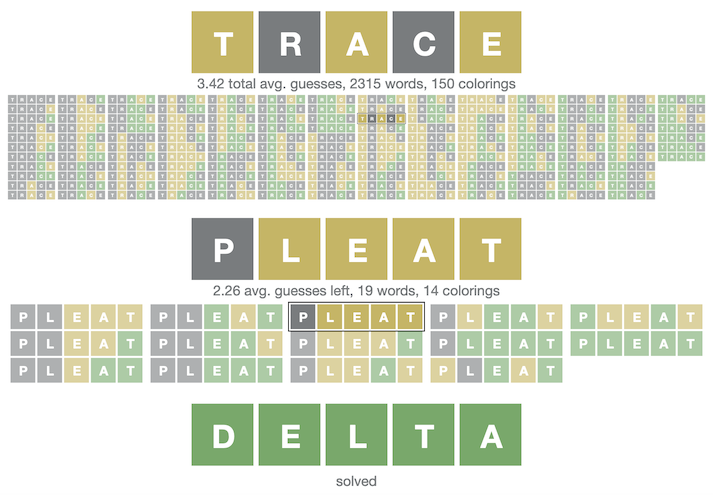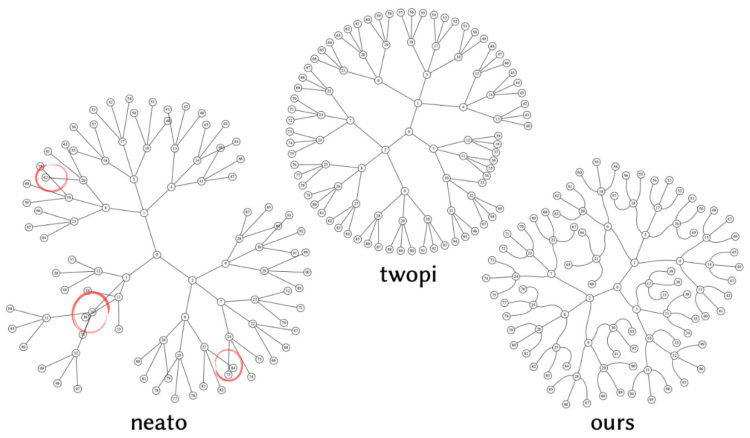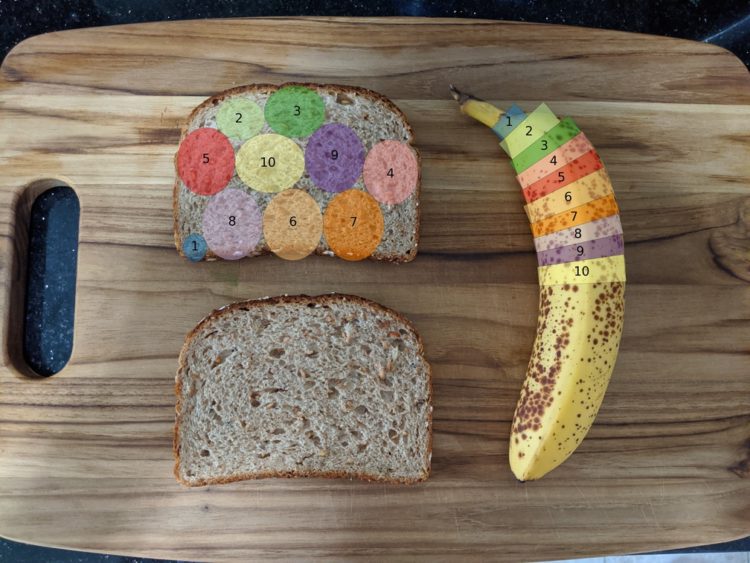In case you’re not so good with the words, but feel the social pressure to play Wordle bearing down on you, Jonathan Olson made an optimized solver:
The game Wordle has a lot of speculation online about what is the “best” first word. If we are exploring optimal strategies to solve the original game in the least number of guesses, most of it is wrong.
For humans, almost all of these words are great! However for optimal strategies, we need to examine all of the guesses, not just the first word. It turns out, it’s possible to solve 99% of all puzzles in only 4 guesses or with an average of ~3.42 guesses per win, but not with most of the “best” words found online.
I don’t play because I am a not-so-good-with-words person, but also there can only be one true Wordle.
Tags: game, Jonathan Olson, optimization, Wordle


